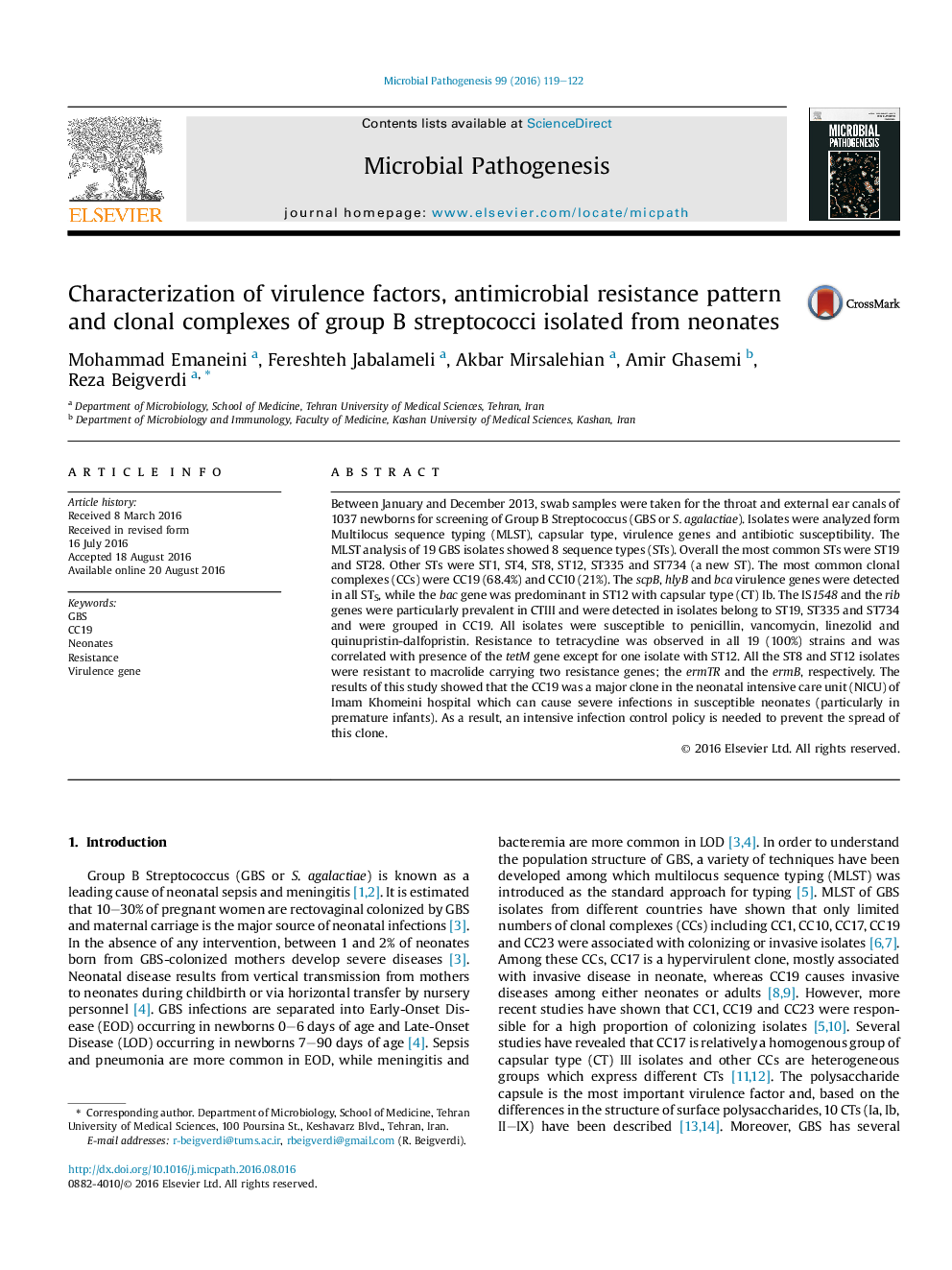| کد مقاله | کد نشریه | سال انتشار | مقاله انگلیسی | نسخه تمام متن |
|---|---|---|---|---|
| 3416278 | 1593690 | 2016 | 4 صفحه PDF | دانلود رایگان |
• The most common STs were ST19 and ST28.
• The CC19 was a major clone in the studied NICU.
• The scpB, hlyB and bca virulence genes were detected in all STs.
• The bac gene was predominant in ST12 with capsular type Ib.
• All isolates were susceptible to penicillin, linezolid and quinupristin-dalfopristin.
Between January and December 2013, swab samples were taken for the throat and external ear canals of 1037 newborns for screening of Group B Streptococcus (GBS or S. agalactiae). Isolates were analyzed form Multilocus sequence typing (MLST), capsular type, virulence genes and antibiotic susceptibility. The MLST analysis of 19 GBS isolates showed 8 sequence types (STs). Overall the most common STs were ST19 and ST28. Other STs were ST1, ST4, ST8, ST12, ST335 and ST734 (a new ST). The most common clonal complexes (CCs) were CC19 (68.4%) and CC10 (21%). The scpB, hlyB and bca virulence genes were detected in all STS, while the bac gene was predominant in ST12 with capsular type (CT) Ib. The IS1548 and the rib genes were particularly prevalent in CTIII and were detected in isolates belong to ST19, ST335 and ST734 and were grouped in CC19. All isolates were susceptible to penicillin, vancomycin, linezolid and quinupristin-dalfopristin. Resistance to tetracycline was observed in all 19 (100%) strains and was correlated with presence of the tetM gene except for one isolate with ST12. All the ST8 and ST12 isolates were resistant to macrolide carrying two resistance genes; the ermTR and the ermB, respectively. The results of this study showed that the CC19 was a major clone in the neonatal intensive care unit (NICU) of Imam Khomeini hospital which can cause severe infections in susceptible neonates (particularly in premature infants). As a result, an intensive infection control policy is needed to prevent the spread of this clone.
Journal: Microbial Pathogenesis - Volume 99, October 2016, Pages 119–122
